
rageval
Evaluation tools for Retrieval-augmented Generation (RAG) methods.
Stars: 118
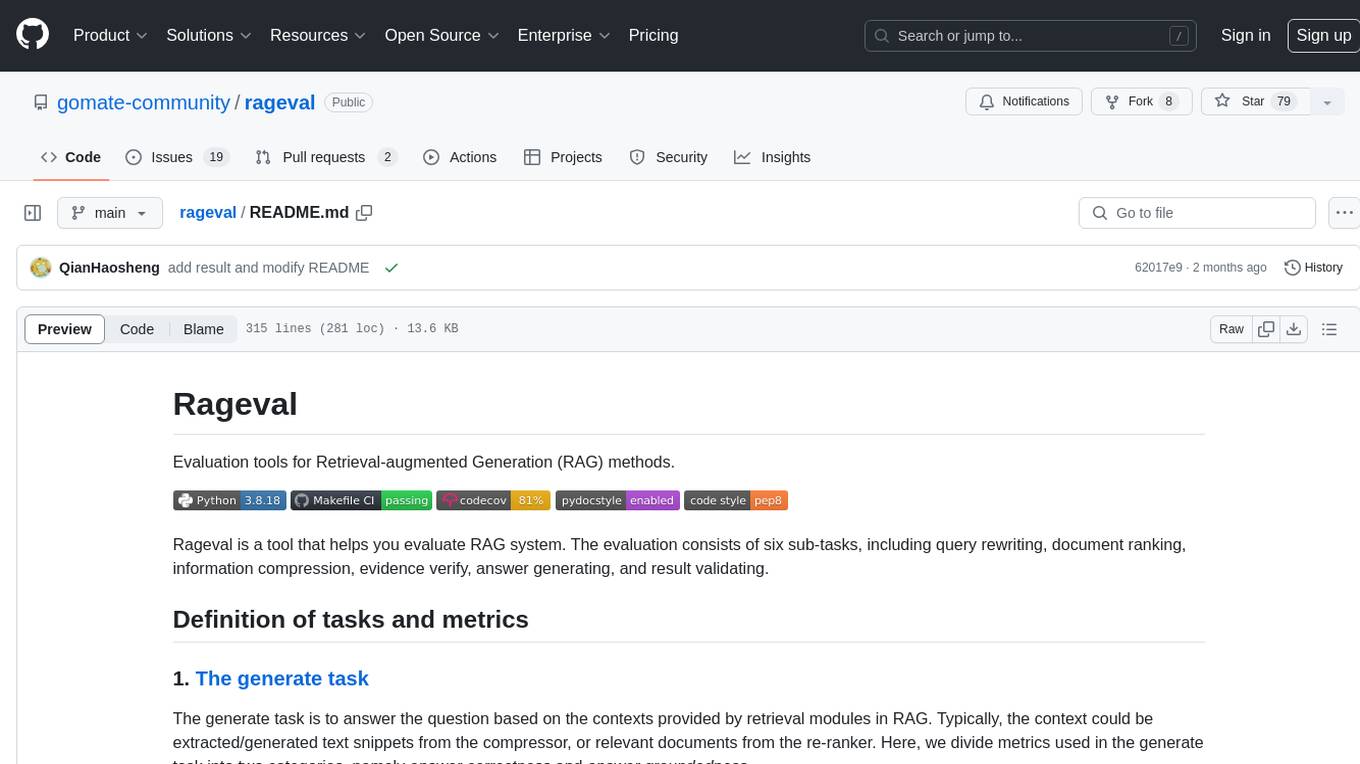
Rageval is an evaluation tool for Retrieval-augmented Generation (RAG) methods. It helps evaluate RAG systems by performing tasks such as query rewriting, document ranking, information compression, evidence verification, answer generation, and result validation. The tool provides metrics for answer correctness and answer groundedness, along with benchmark results for ASQA and ALCE datasets. Users can install and use Rageval to assess the performance of RAG models in question-answering tasks.
README:
Evaluation tools for Retrieval-augmented Generation (RAG) methods.
Rageval is a tool that helps you evaluate RAG system. The evaluation consists of six sub-tasks, including query rewriting, document ranking, information compression, evidence verify, answer generating, and result validating.
The generate task is to answer the question based on the contexts provided by retrieval modules in RAG. Typically, the context could be extracted/generated text snippets from the compressor, or relevant documents from the re-ranker. Here, we divide metrics used in the generate task into two categories, namely answer correctness and answer groundedness.
(1) Answer Correctness: this category of metrics is to evaluate the correctness by comparing the generated answer with the groundtruth answer. Here are some commonly used metrics:
- Answer F1 Correctness: is widely used in the paper (Jiang et al.), the paper (Yu et al.), the paper (Xu et al.), and others.
- Answer NLI Correctness: also known as claim recall in the paper (Tianyu et al.).
- Answer EM Correctness: also known as Exact Match as used in the paper (Ivan Stelmakh et al.).
- Answer Bleu Score: also known as Bleu as used in the paper (Kishore Papineni et al.).
- Answer Ter Score: also known as Translation Edit Rate as used in the paper (Snover et al.).
- Answer chrF Score: also known as character n-gram F-score as used in the paper (Popovic et al.).
- Answer Disambig-F1: also known as Disambig-F1 as used in the paper (Ivan Stelmakh et al.) and the paper (Zhengbao Jiang et al.).
- Answer Rouge Correctness: also known as Rouge as used in the paper (Chin-Yew Lin).
- Answer Accuracy: also known as Accuracy as used in the paper (Dan Hendrycks et al.).
- Answer LCS Ratio: also know as LCS(%) as used in the paper (Nashid et al.).
- Answer Edit Distance: also know as Edit distance as used in the paper (Nashid et al.).
(2) Answer Groundedness: this category of metrics is to evaluate the groundedness (also known as factual consistency) by comparing the generated answer with the provided contexts. Here are some commonly used metrics:
- Answer Citation Precision: also known as citation precision in the paper (Tianyu et al.).
- Answer Citation Recall: also known as citation recall in the paper (Tianyu et al.).
- Context Reject Rate: also known as reject rate in the paper (Wenhao Yu et al.).
The rewrite task is to reformulate user question into a set of queries, making them more friendly to the search module in RAG.
The search task is to retrieve relevant documents from the knowledge base.
(1) Context Adequacy: this category of metrics is to evaluate the adequacy by comparing the retrieved documents with the groundtruth contexts. Here are some commonly used metrics:
(2) Context Relevance: this category of metrics is to evaluate the relevance by comparing the retrieved documents with the groundtruth answers. Here are some commonly used metrics:
- Context Recall: also known as Context Recall in RAGAS framework.
Some metrics evaluations rely on LLMs as evaluators. You can either directly call OpenAI's API or deploy an open-source model as a RESTful API in the OpenAI format for evaluation.
- OpenAI
os.environ["OPENAI_API_KEY"] = "<your_openai_api_key>"- Open source LLMs
Please use vllm to setup the API server for open source LLMs. For example, use the following command to deploy a Llama-3-8B model hosted on HuggingFace:
python -m vllm.entrypoints.openai.api_server \
--model meta-llama/Meta-Llama-3-8B-Instruct \
--tensor-parallel-size 8 \
--dtype auto \
--api-key sk-123456789 \
--gpu-memory-utilization 0.9 \
--port 5000ASQA dataset is a question-answering dataset that contains factoid questions and long-form answers. The benchmark evaluates the correctness of the answer in the dataset. All detailed results can be download from this repo. Besides, these results can be reproduced based on the script in this repo.
| Model | Retriever | Metric | |||
| String EM | Rouge L | Disambig F1 | D-R Score | ||
| gpt-3.5-turbo-instruct | no-retrieval | 33.8 | 30.2 | 30.7 | 30.5 |
| mistral-7b | no-retrieval | 20.6 | 31.1 | 26.6 | 28.7 |
| llama2-7b-chat | no-retrieval | 21.7 | 30.7 | 28.0 | 29.3 |
| llama3-8b-base | no-retrieval | 25.7 | 31.0 | 28.4 | 29.7 |
| llama3-8b-instruct | no-retrieval | 27.1 | 30.9 | 29.4 | 30.1 |
| solar-10.7b-instruct | no-retrieval | 23.0 | 24.9 | 28.1 | 26.5 |
ALCE is a benchmark for Automatic LLMs' Citation Evaluation. ALCE contains three datasets: ASQA, QAMPARI, and ELI5. All detailed results can be download from this repo. Besides, these results can be reproduced based on the script in this repo.
For more evaluation results, please view the benchmark's README: ALCE-ASQA and ALCE-ELI5.
| Dataset | Model | Method | Metric | |||||
| retriever | prompt | MAUVE | EM Recall | Claim Recall | Citation Recall | Citation Precision | ||
| ASQA | llama2-7b-chat | GTR | vanilla(5-psg) | - | 33.3 | - | 55.9 | 80.0 |
| DPR | vanilla(5-psg) | - | 29.2 | - | 49.2 | 81.0 | ||
| Oracle | vanilla(5-psg) | - | 41.7 | - | 58.1 | 78.9 | ||
| ELI5 | llama2-7b-chat | BM25 | vanilla(5-psg) | - | - | 11.5 | 26.6 | 74.5 |
| Oracle | vanilla(5-psg) | - | - | 17.8 | 34.0 | 75.6 | ||
git clone https://github.com/gomate-community/rageval.git
cd rageval
python setup.py install
Take F1 as an example.
from datasets import Dataset
import rageval as rl
sample = {
"answers": [
"Democrat rick kriseman won the 2016 mayoral election, while re- publican former mayor rick baker did so in the 2017 mayoral election."
],
"gt_answers": [
[
"Kriseman",
"Rick Kriseman"
]
]
}
dataset = Dataset.from_dict(sample)
metric = rl.metrics.AnswerF1Correctness()
score, dataset = metric.compute(dataset)
Benchmarks can be run directly using scripts (Take ALCE-ELI5 as an example).
bash benchmarks/ALCE/ELI5/run.sh
Please make sure to read the Contributing Guide before creating a pull request.
This project is currently at its preliminary stage.
For Tasks:
Click tags to check more tools for each tasksFor Jobs:
Alternative AI tools for rageval
Similar Open Source Tools

rageval
Rageval is an evaluation tool for Retrieval-augmented Generation (RAG) methods. It helps evaluate RAG systems by performing tasks such as query rewriting, document ranking, information compression, evidence verification, answer generation, and result validation. The tool provides metrics for answer correctness and answer groundedness, along with benchmark results for ASQA and ALCE datasets. Users can install and use Rageval to assess the performance of RAG models in question-answering tasks.

PIXIU
PIXIU is a project designed to support the development, fine-tuning, and evaluation of Large Language Models (LLMs) in the financial domain. It includes components like FinBen, a Financial Language Understanding and Prediction Evaluation Benchmark, FIT, a Financial Instruction Dataset, and FinMA, a Financial Large Language Model. The project provides open resources, multi-task and multi-modal financial data, and diverse financial tasks for training and evaluation. It aims to encourage open research and transparency in the financial NLP field.
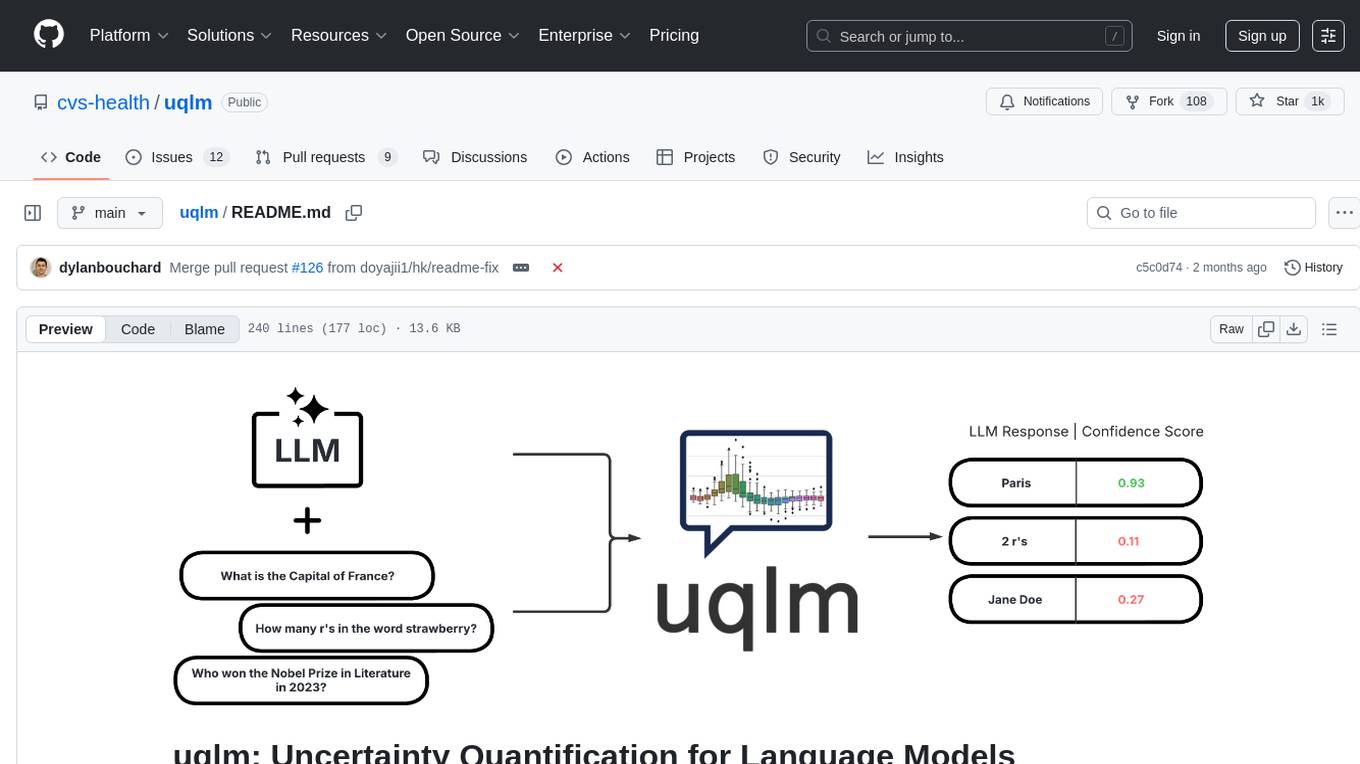
uqlm
UQLM is a Python library for Large Language Model (LLM) hallucination detection using state-of-the-art uncertainty quantification techniques. It provides response-level scorers for quantifying uncertainty of LLM outputs, categorized into four main types: Black-Box Scorers, White-Box Scorers, LLM-as-a-Judge Scorers, and Ensemble Scorers. Users can leverage different scorers to assess uncertainty in generated responses, with options for off-the-shelf usage or customization. The library offers illustrative code snippets and detailed information on available scorers for each type, along with example usage for conducting hallucination detection. Additionally, UQLM includes documentation, example notebooks, and associated research for further exploration and understanding.
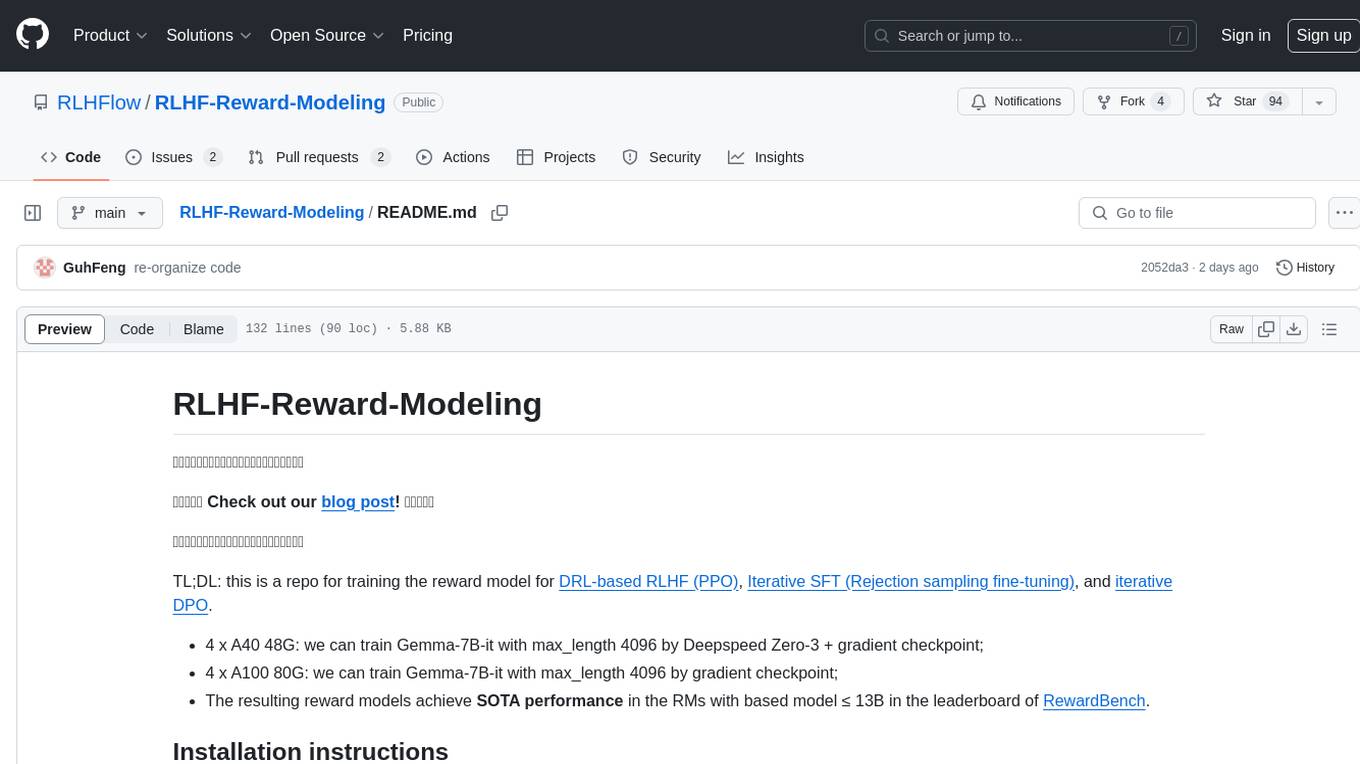
RLHF-Reward-Modeling
This repository, RLHF-Reward-Modeling, is dedicated to training reward models for DRL-based RLHF (PPO), Iterative SFT, and iterative DPO. It provides state-of-the-art performance in reward models with a base model size of up to 13B. The installation instructions involve setting up the environment and aligning the handbook. Dataset preparation requires preprocessing conversations into a standard format. The code can be run with Gemma-2b-it, and evaluation results can be obtained using provided datasets. The to-do list includes various reward models like Bradley-Terry, preference model, regression-based reward model, and multi-objective reward model. The repository is part of iterative rejection sampling fine-tuning and iterative DPO.
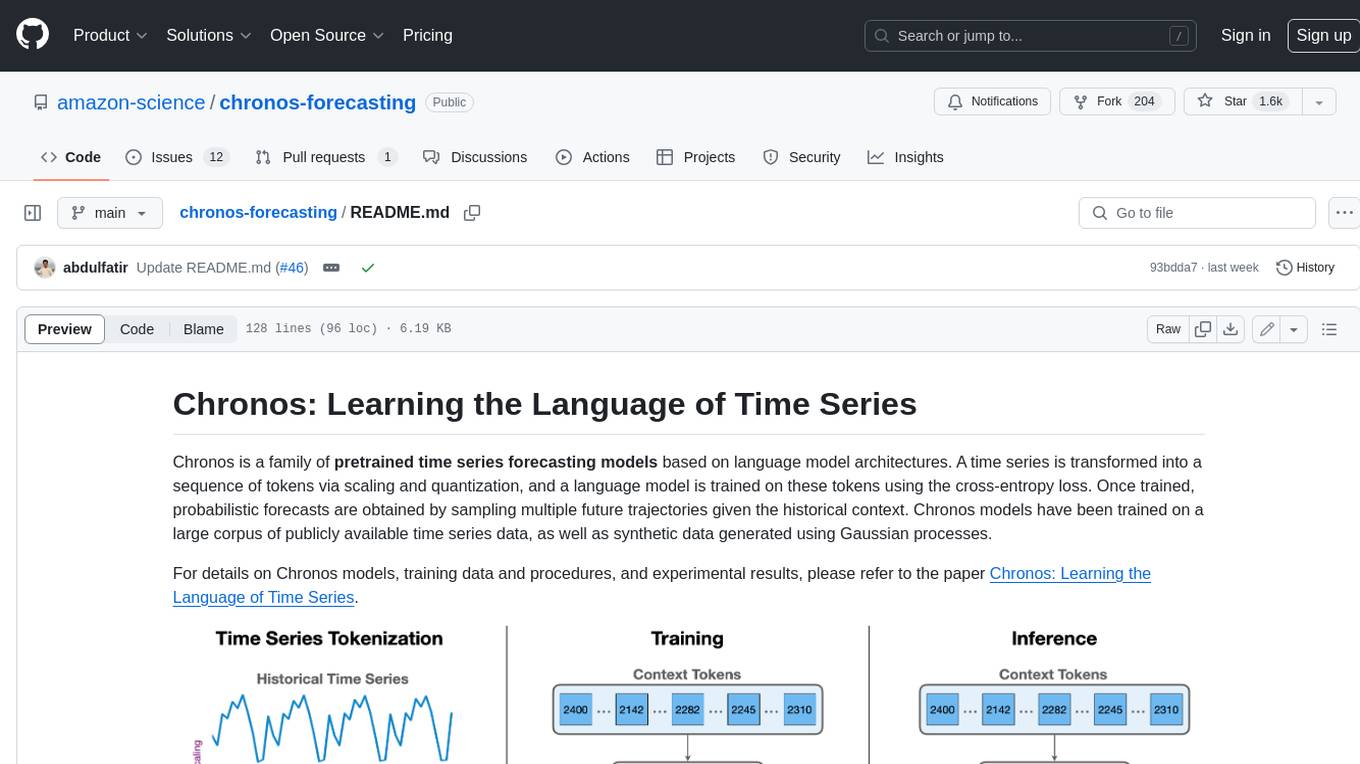
chronos-forecasting
Chronos is a family of pretrained time series forecasting models based on language model architectures. A time series is transformed into a sequence of tokens via scaling and quantization, and a language model is trained on these tokens using the cross-entropy loss. Once trained, probabilistic forecasts are obtained by sampling multiple future trajectories given the historical context. Chronos models have been trained on a large corpus of publicly available time series data, as well as synthetic data generated using Gaussian processes.
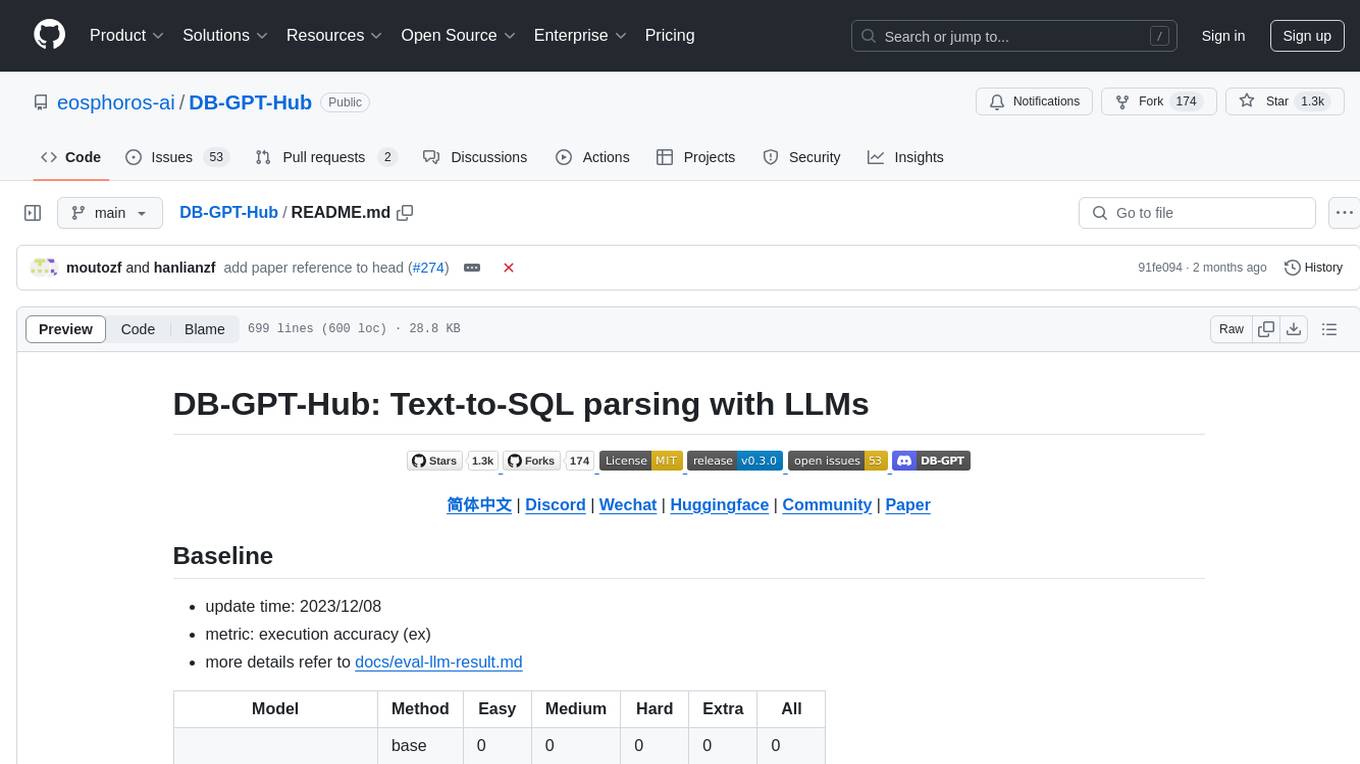
DB-GPT-Hub
DB-GPT-Hub is an experimental project leveraging Large Language Models (LLMs) for Text-to-SQL parsing. It includes stages like data collection, preprocessing, model selection, construction, and fine-tuning of model weights. The project aims to enhance Text-to-SQL capabilities, reduce model training costs, and enable developers to contribute to improving Text-to-SQL accuracy. The ultimate goal is to achieve automated question-answering based on databases, allowing users to execute complex database queries using natural language descriptions. The project has successfully integrated multiple large models and established a comprehensive workflow for data processing, SFT model training, prediction output, and evaluation.
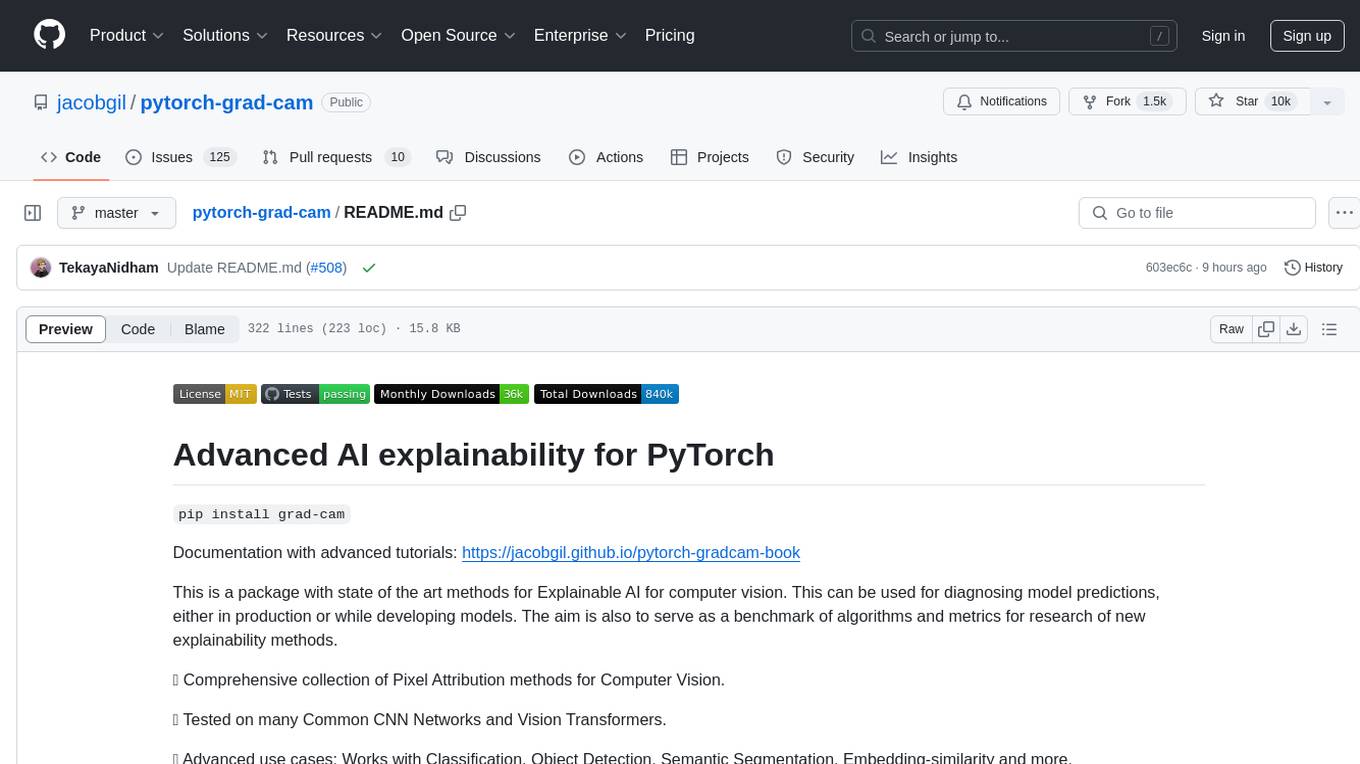
pytorch-grad-cam
This repository provides advanced AI explainability for PyTorch, offering state-of-the-art methods for Explainable AI in computer vision. It includes a comprehensive collection of Pixel Attribution methods for various tasks like Classification, Object Detection, Semantic Segmentation, and more. The package supports high performance with full batch image support and includes metrics for evaluating and tuning explanations. Users can visualize and interpret model predictions, making it suitable for both production and model development scenarios.
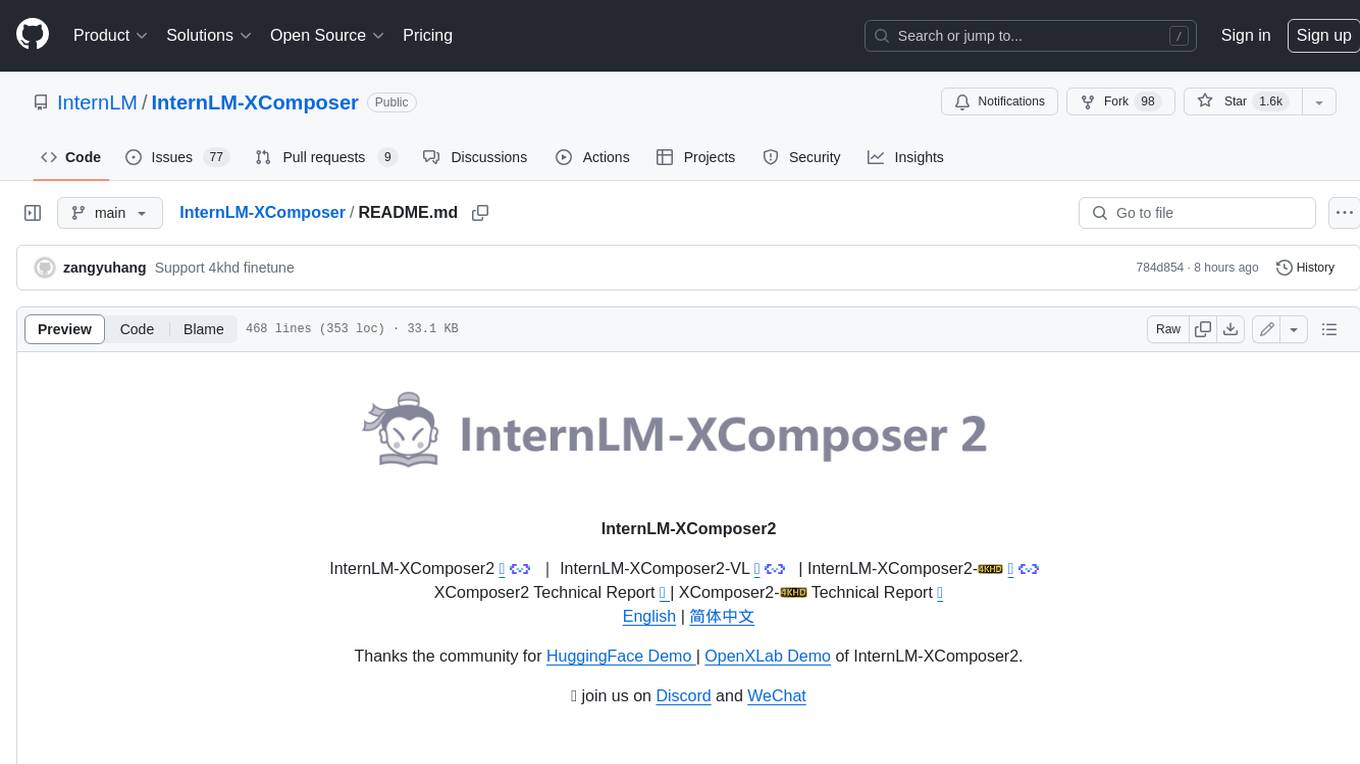
InternLM-XComposer
InternLM-XComposer2 is a groundbreaking vision-language large model (VLLM) based on InternLM2-7B excelling in free-form text-image composition and comprehension. It boasts several amazing capabilities and applications: * **Free-form Interleaved Text-Image Composition** : InternLM-XComposer2 can effortlessly generate coherent and contextual articles with interleaved images following diverse inputs like outlines, detailed text requirements and reference images, enabling highly customizable content creation. * **Accurate Vision-language Problem-solving** : InternLM-XComposer2 accurately handles diverse and challenging vision-language Q&A tasks based on free-form instructions, excelling in recognition, perception, detailed captioning, visual reasoning, and more. * **Awesome performance** : InternLM-XComposer2 based on InternLM2-7B not only significantly outperforms existing open-source multimodal models in 13 benchmarks but also **matches or even surpasses GPT-4V and Gemini Pro in 6 benchmarks** We release InternLM-XComposer2 series in three versions: * **InternLM-XComposer2-4KHD-7B** 🤗: The high-resolution multi-task trained VLLM model with InternLM-7B as the initialization of the LLM for _High-resolution understanding_ , _VL benchmarks_ and _AI assistant_. * **InternLM-XComposer2-VL-7B** 🤗 : The multi-task trained VLLM model with InternLM-7B as the initialization of the LLM for _VL benchmarks_ and _AI assistant_. **It ranks as the most powerful vision-language model based on 7B-parameter level LLMs, leading across 13 benchmarks.** * **InternLM-XComposer2-VL-1.8B** 🤗 : A lightweight version of InternLM-XComposer2-VL based on InternLM-1.8B. * **InternLM-XComposer2-7B** 🤗: The further instruction tuned VLLM for _Interleaved Text-Image Composition_ with free-form inputs. Please refer to Technical Report and 4KHD Technical Reportfor more details.
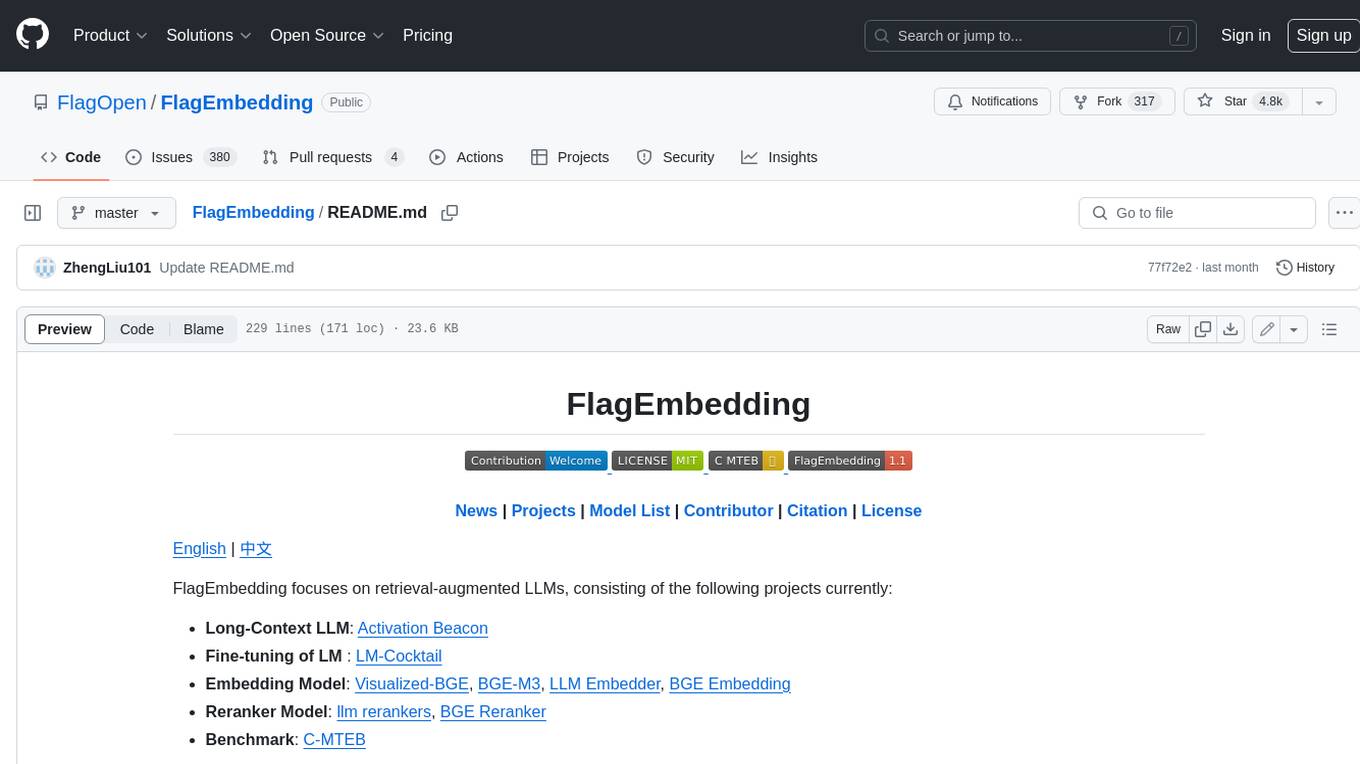
FlagEmbedding
FlagEmbedding focuses on retrieval-augmented LLMs, consisting of the following projects currently: * **Long-Context LLM** : Activation Beacon * **Fine-tuning of LM** : LM-Cocktail * **Embedding Model** : Visualized-BGE, BGE-M3, LLM Embedder, BGE Embedding * **Reranker Model** : llm rerankers, BGE Reranker * **Benchmark** : C-MTEB
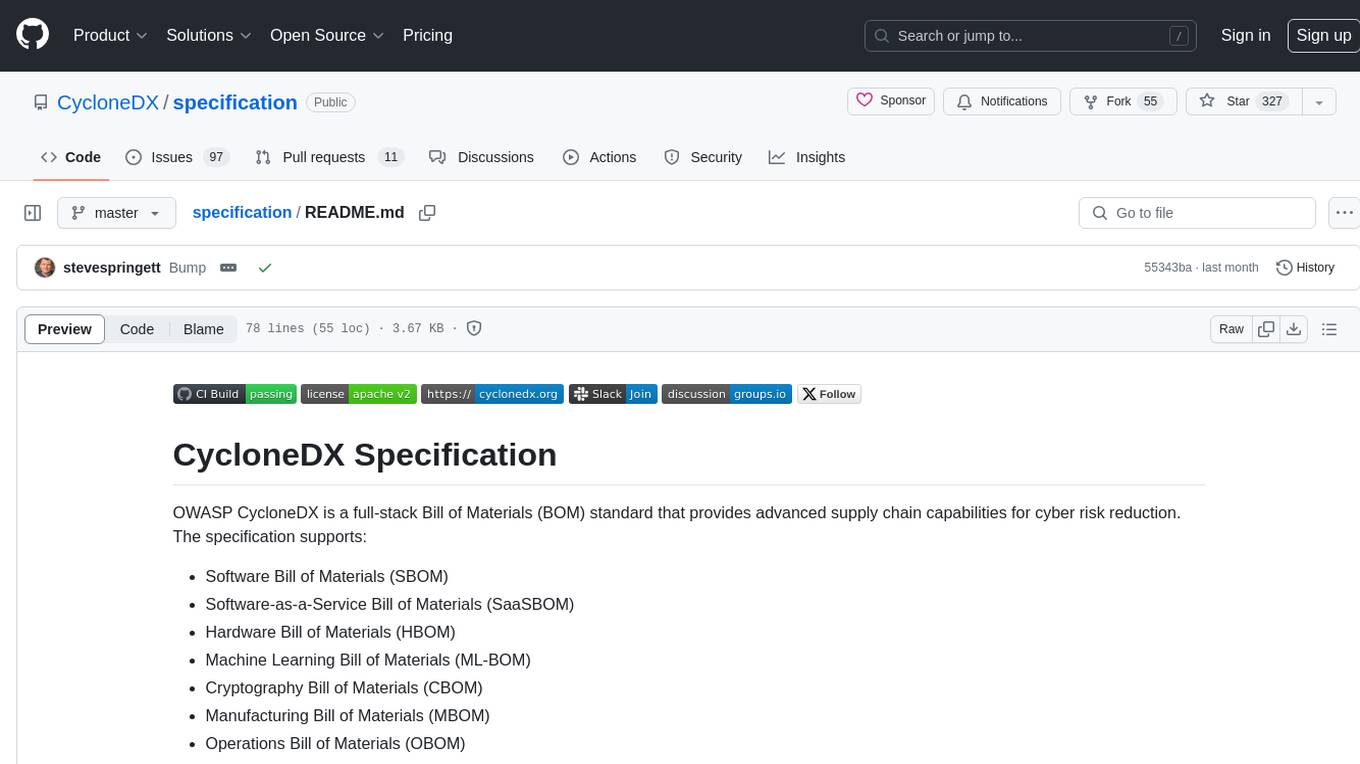
specification
OWASP CycloneDX is a full-stack Bill of Materials (BOM) standard that provides advanced supply chain capabilities for cyber risk reduction. The specification supports various types of Bill of Materials including Software, Hardware, Machine Learning, Cryptography, Manufacturing, and Operations. It also includes support for Vulnerability Disclosure Reports, Vulnerability Exploitability eXchange, and CycloneDX Attestations. CycloneDX helps organizations accurately inventory all components used in software development to identify risks, enhance transparency, and enable rapid impact analysis. The project is managed by the CycloneDX Core Working Group under the OWASP Foundation and is supported by the global information security community.
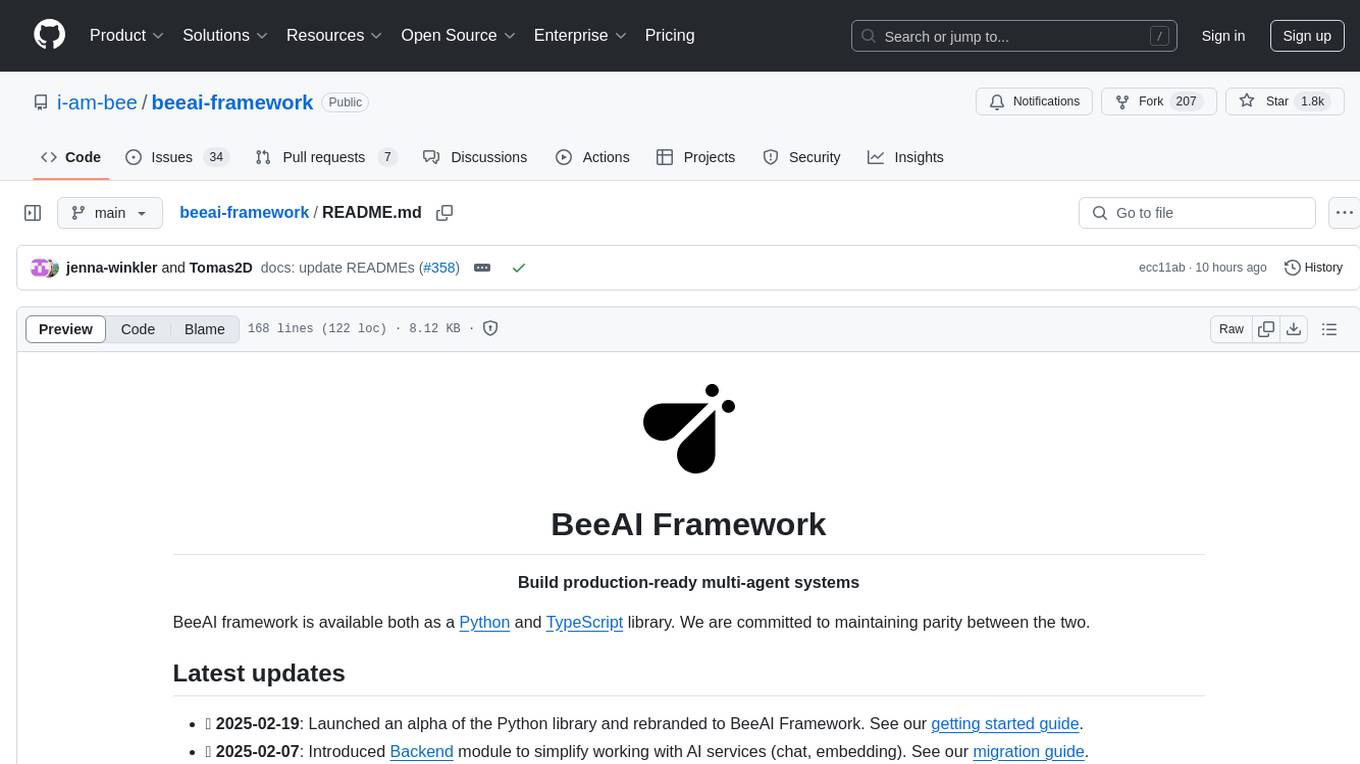
beeai-framework
BeeAI Framework is a versatile tool for building production-ready multi-agent systems. It offers flexibility in orchestrating agents, seamless integration with various models and tools, and production-grade controls for scaling. The framework supports Python and TypeScript libraries, enabling users to implement simple to complex multi-agent patterns, connect with AI services, and optimize token usage and resource management.
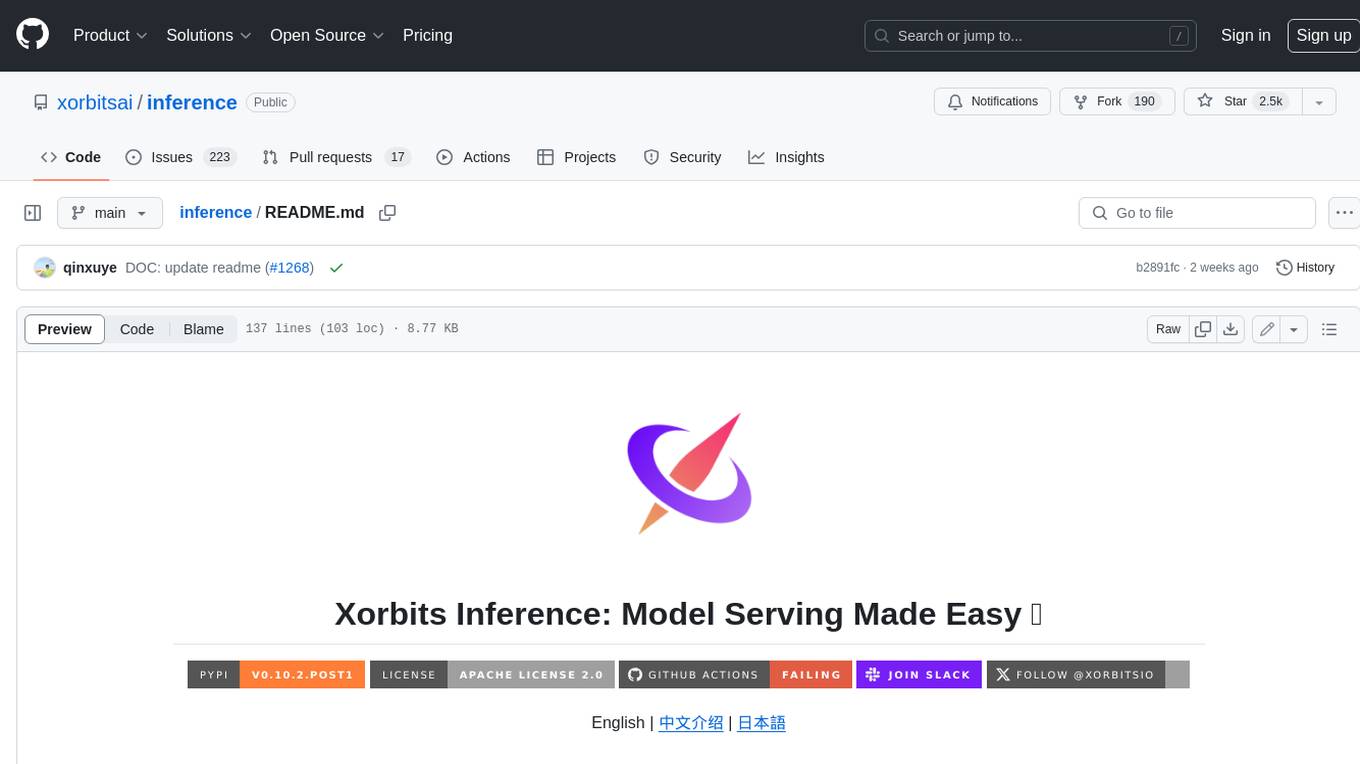
inference
Xorbits Inference (Xinference) is a powerful and versatile library designed to serve language, speech recognition, and multimodal models. With Xorbits Inference, you can effortlessly deploy and serve your or state-of-the-art built-in models using just a single command. Whether you are a researcher, developer, or data scientist, Xorbits Inference empowers you to unleash the full potential of cutting-edge AI models.
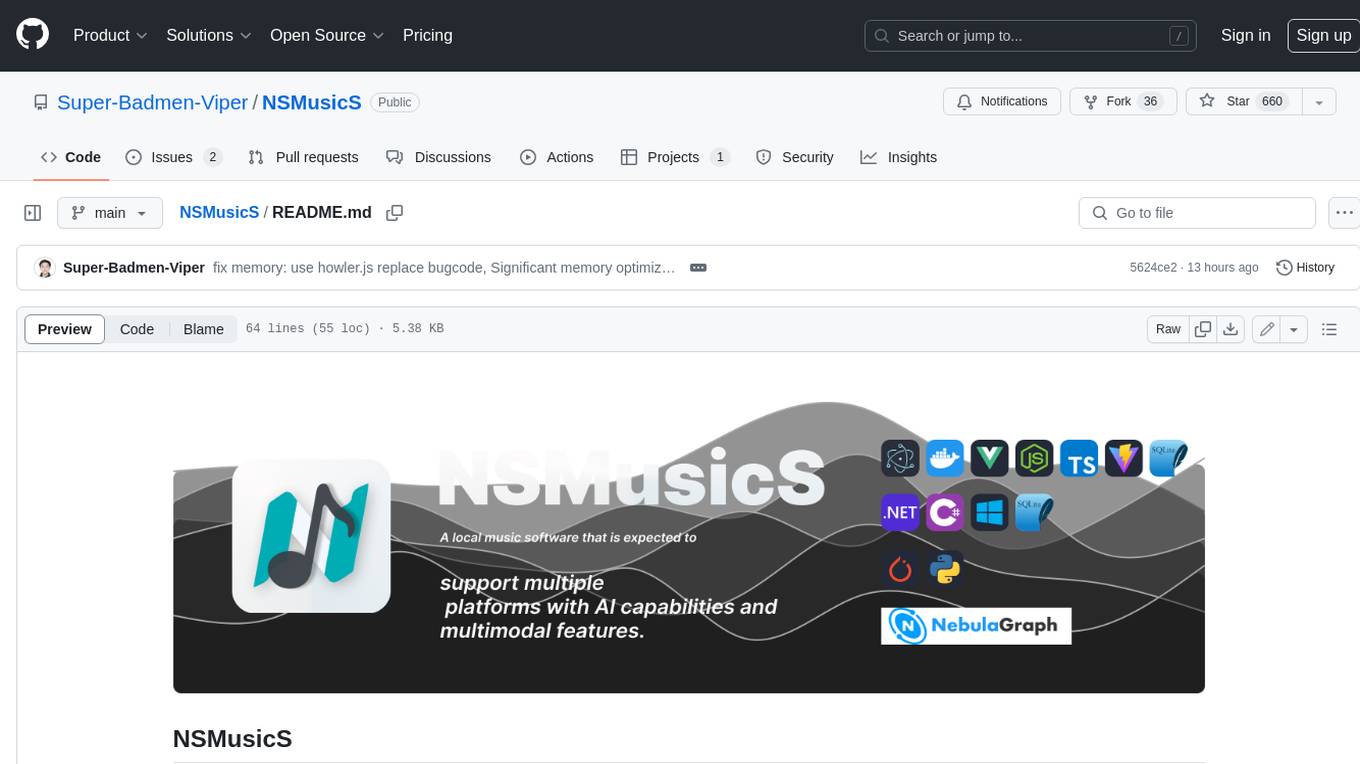
NSMusicS
NSMusicS is a local music software that is expected to support multiple platforms with AI capabilities and multimodal features. The goal of NSMusicS is to integrate various functions (such as artificial intelligence, streaming, music library management, cross platform, etc.), which can be understood as similar to Navidrome but with more features than Navidrome. It wants to become a plugin integrated application that can almost have all music functions.
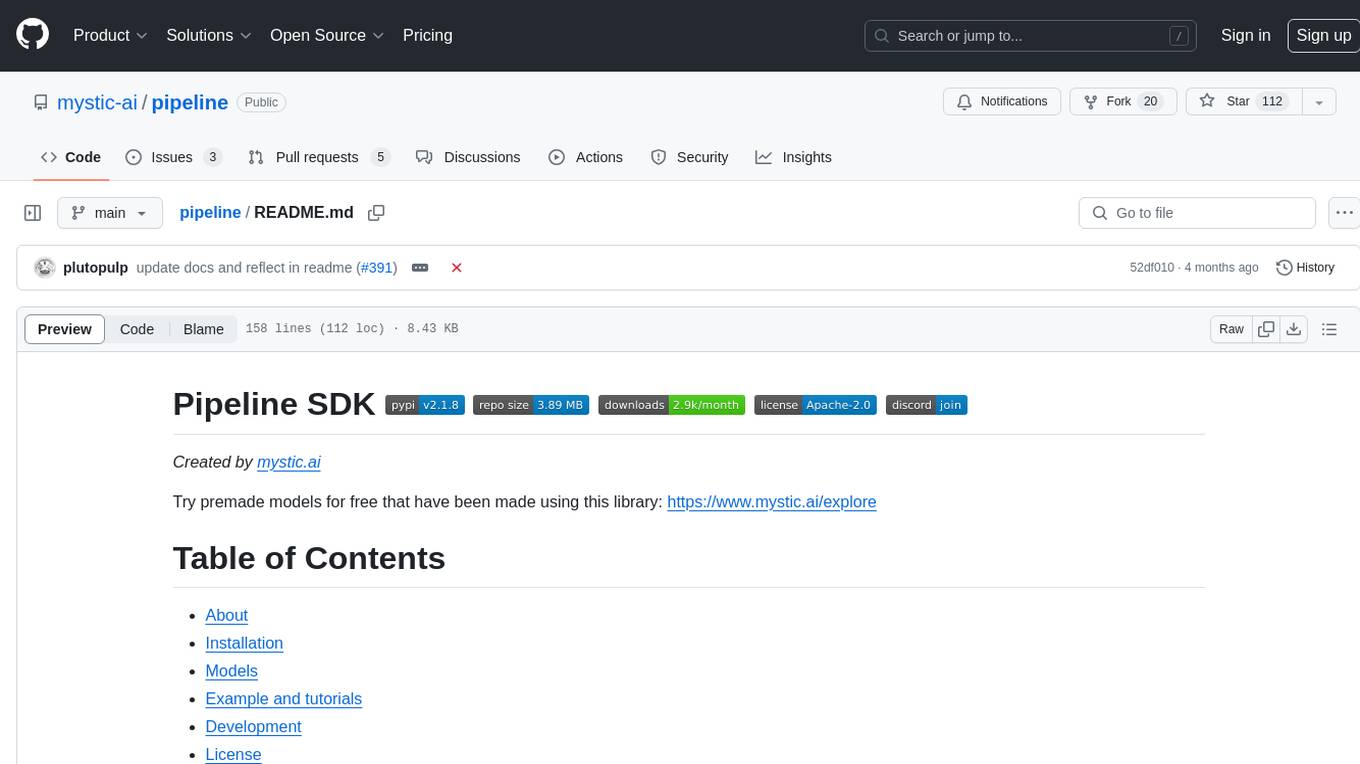
pipeline
Pipeline is a Python library designed for constructing computational flows for AI/ML models. It supports both development and production environments, offering capabilities for inference, training, and finetuning. The library serves as an interface to Mystic, enabling the execution of pipelines at scale and on enterprise GPUs. Users can also utilize this SDK with Pipeline Core on a private hosted cluster. The syntax for defining AI/ML pipelines is reminiscent of sessions in Tensorflow v1 and Flows in Prefect.
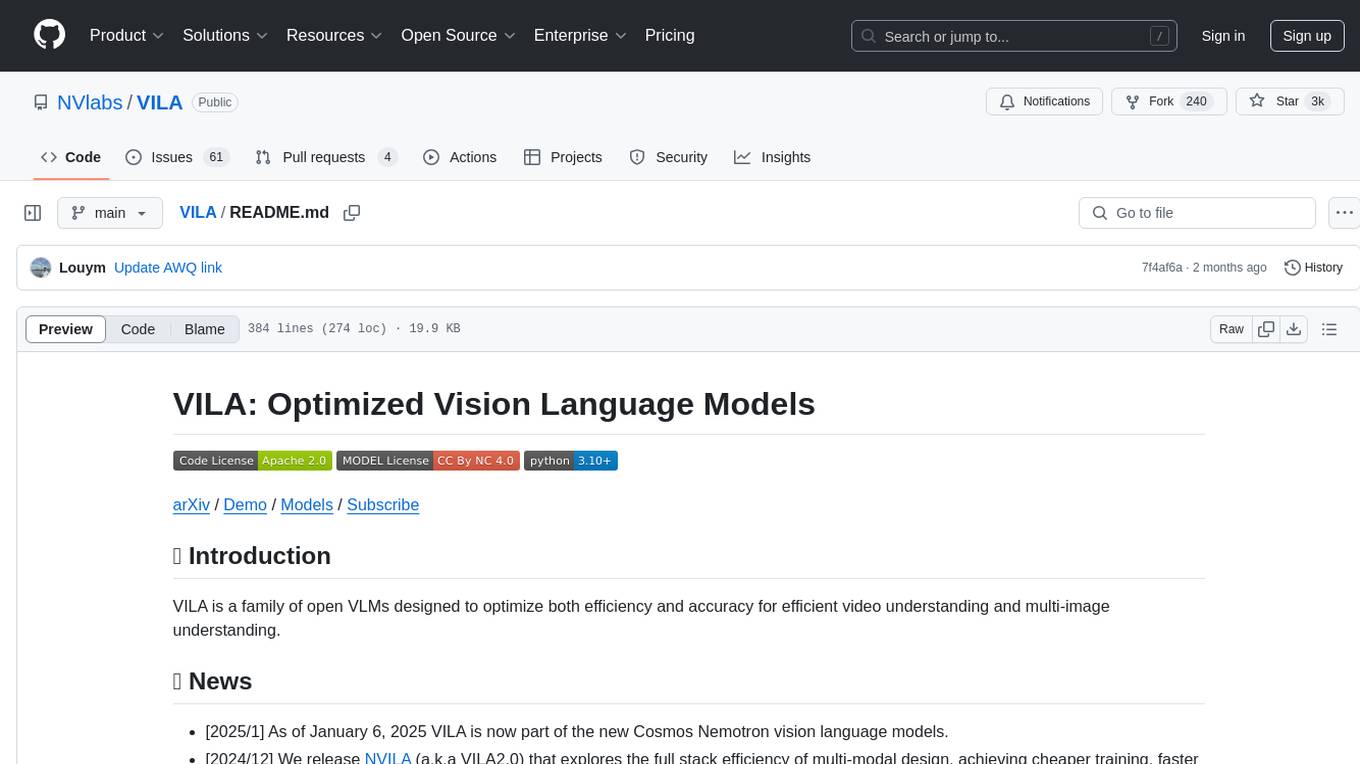
VILA
VILA is a family of open Vision Language Models optimized for efficient video understanding and multi-image understanding. It includes models like NVILA, LongVILA, VILA-M3, VILA-U, and VILA-1.5, each offering specific features and capabilities. The project focuses on efficiency, accuracy, and performance in various tasks related to video, image, and language understanding and generation. VILA models are designed to be deployable on diverse NVIDIA GPUs and support long-context video understanding, medical applications, and multi-modal design.
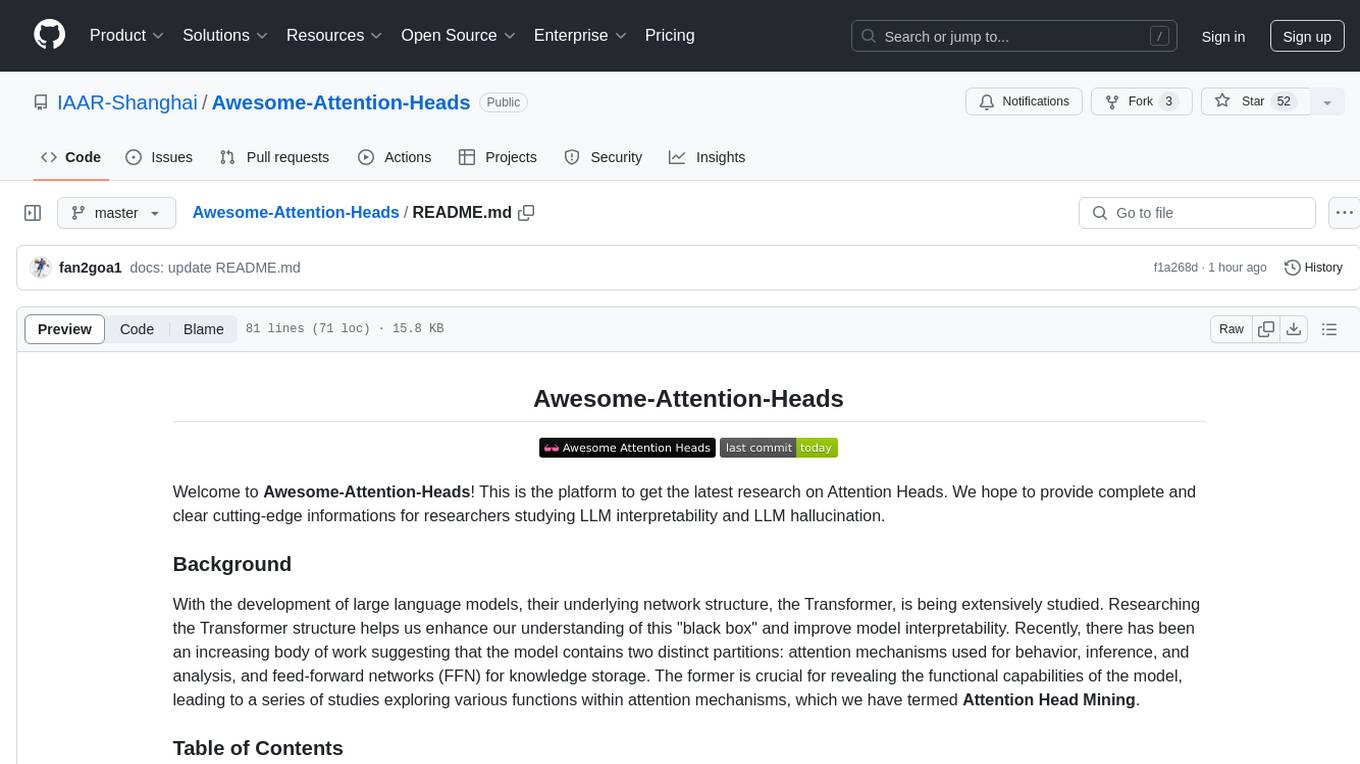
Awesome-Attention-Heads
Awesome-Attention-Heads is a platform providing the latest research on Attention Heads, focusing on enhancing understanding of Transformer structure for model interpretability. It explores attention mechanisms for behavior, inference, and analysis, alongside feed-forward networks for knowledge storage. The repository aims to support researchers studying LLM interpretability and hallucination by offering cutting-edge information on Attention Head Mining.
For similar tasks

rageval
Rageval is an evaluation tool for Retrieval-augmented Generation (RAG) methods. It helps evaluate RAG systems by performing tasks such as query rewriting, document ranking, information compression, evidence verification, answer generation, and result validation. The tool provides metrics for answer correctness and answer groundedness, along with benchmark results for ASQA and ALCE datasets. Users can install and use Rageval to assess the performance of RAG models in question-answering tasks.
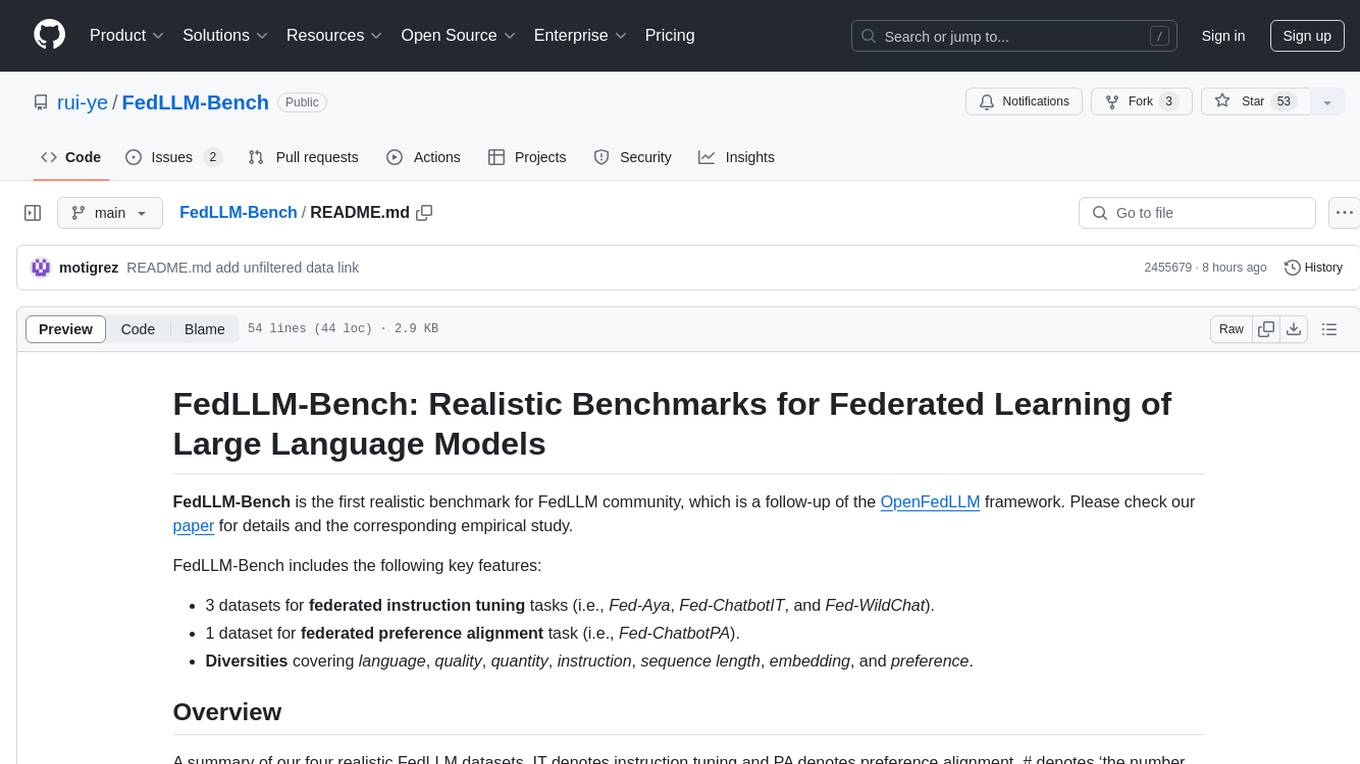
FedLLM-Bench
FedLLM-Bench is a realistic benchmark for the Federated Learning of Large Language Models community. It includes datasets for federated instruction tuning and preference alignment tasks, exhibiting diversities in language, quality, quantity, instruction, sequence length, embedding, and preference. The repository provides training scripts and code for open-ended evaluation, aiming to facilitate research and development in federated learning of large language models.
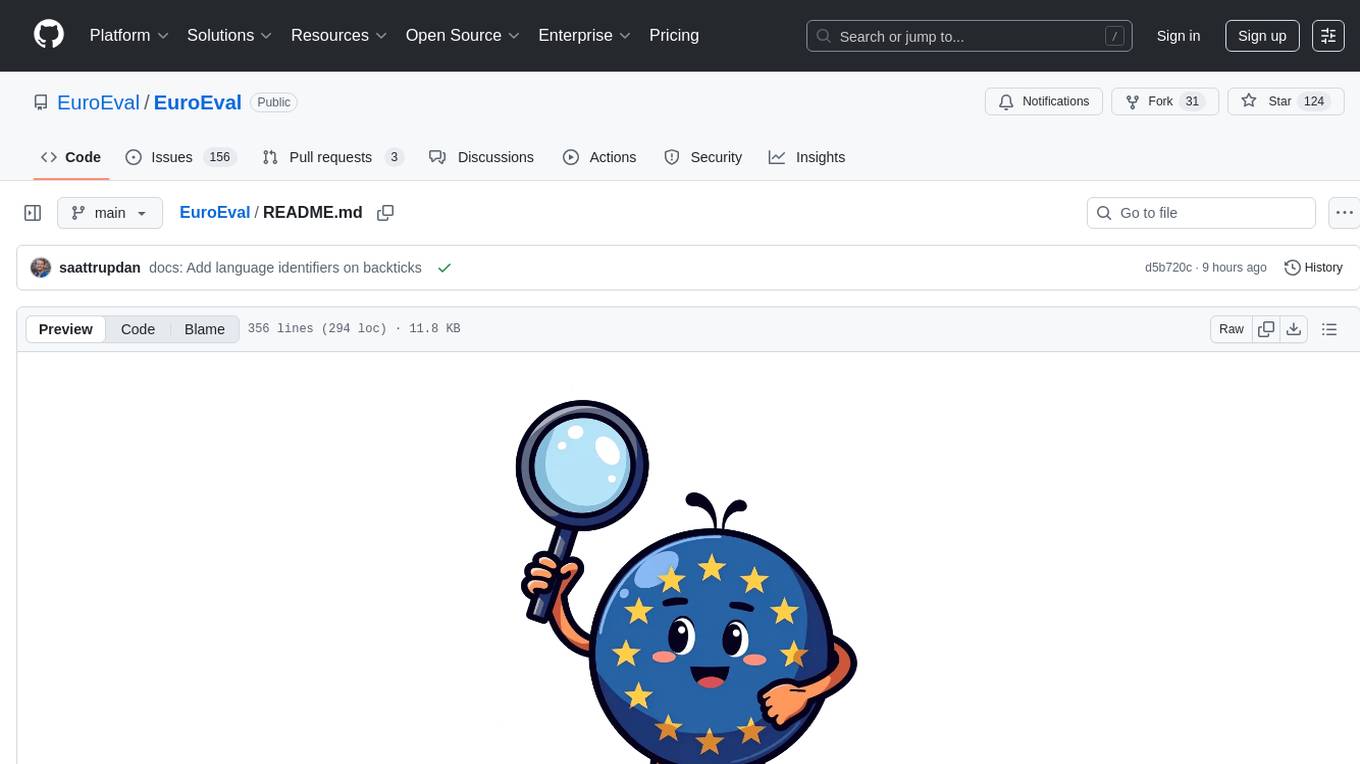
EuroEval
EuroEval is a robust European language model benchmark tool, formerly known as ScandEval. It provides a platform to benchmark pretrained models on various tasks across different languages. Users can evaluate models, datasets, and metrics both online and offline. The tool supports benchmarking from the command line, script, and Docker. Additionally, users can reproduce datasets used in the project using provided scripts. EuroEval welcomes contributions and offers guidelines for general contributions and adding new datasets.

labelbox-python
Labelbox is a data-centric AI platform for enterprises to develop, optimize, and use AI to solve problems and power new products and services. Enterprises use Labelbox to curate data, generate high-quality human feedback data for computer vision and LLMs, evaluate model performance, and automate tasks by combining AI and human-centric workflows. The academic & research community uses Labelbox for cutting-edge AI research.
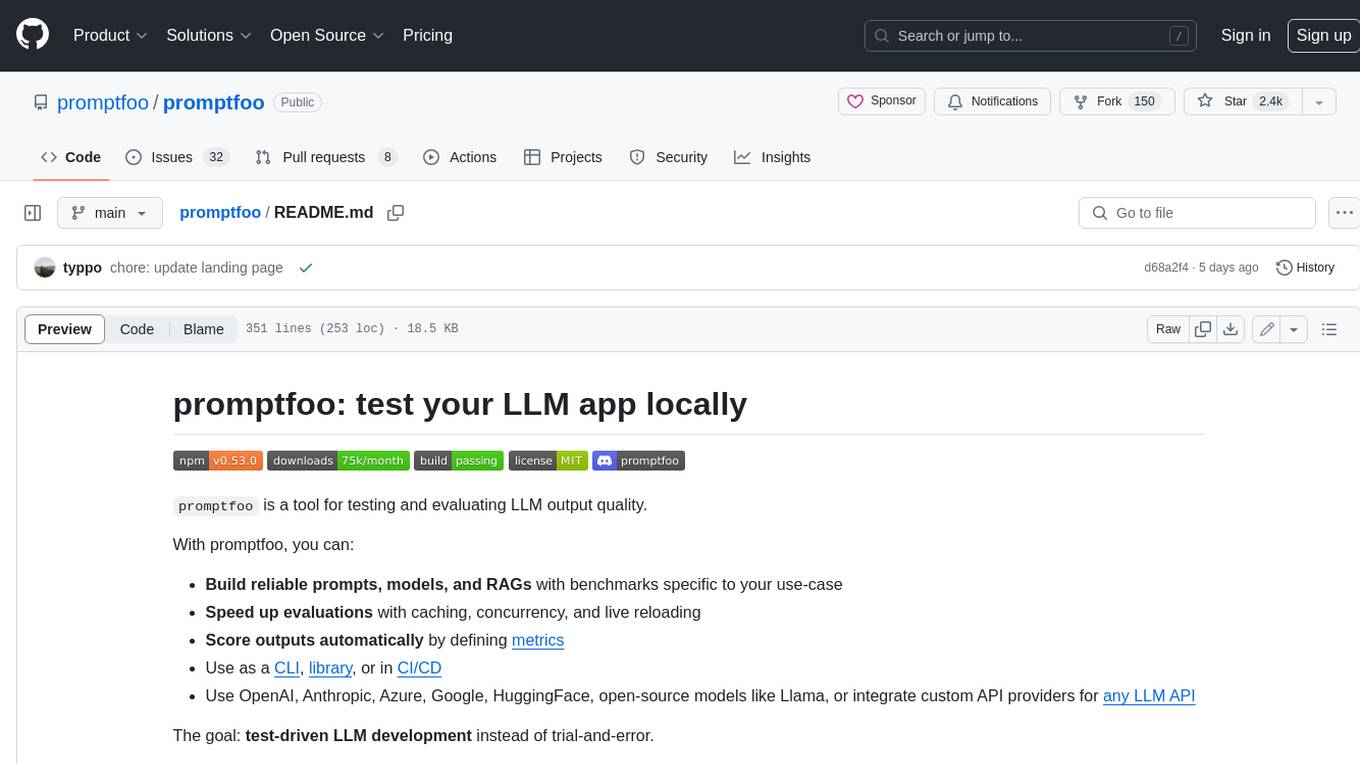
promptfoo
Promptfoo is a tool for testing and evaluating LLM output quality. With promptfoo, you can build reliable prompts, models, and RAGs with benchmarks specific to your use-case, speed up evaluations with caching, concurrency, and live reloading, score outputs automatically by defining metrics, use as a CLI, library, or in CI/CD, and use OpenAI, Anthropic, Azure, Google, HuggingFace, open-source models like Llama, or integrate custom API providers for any LLM API.
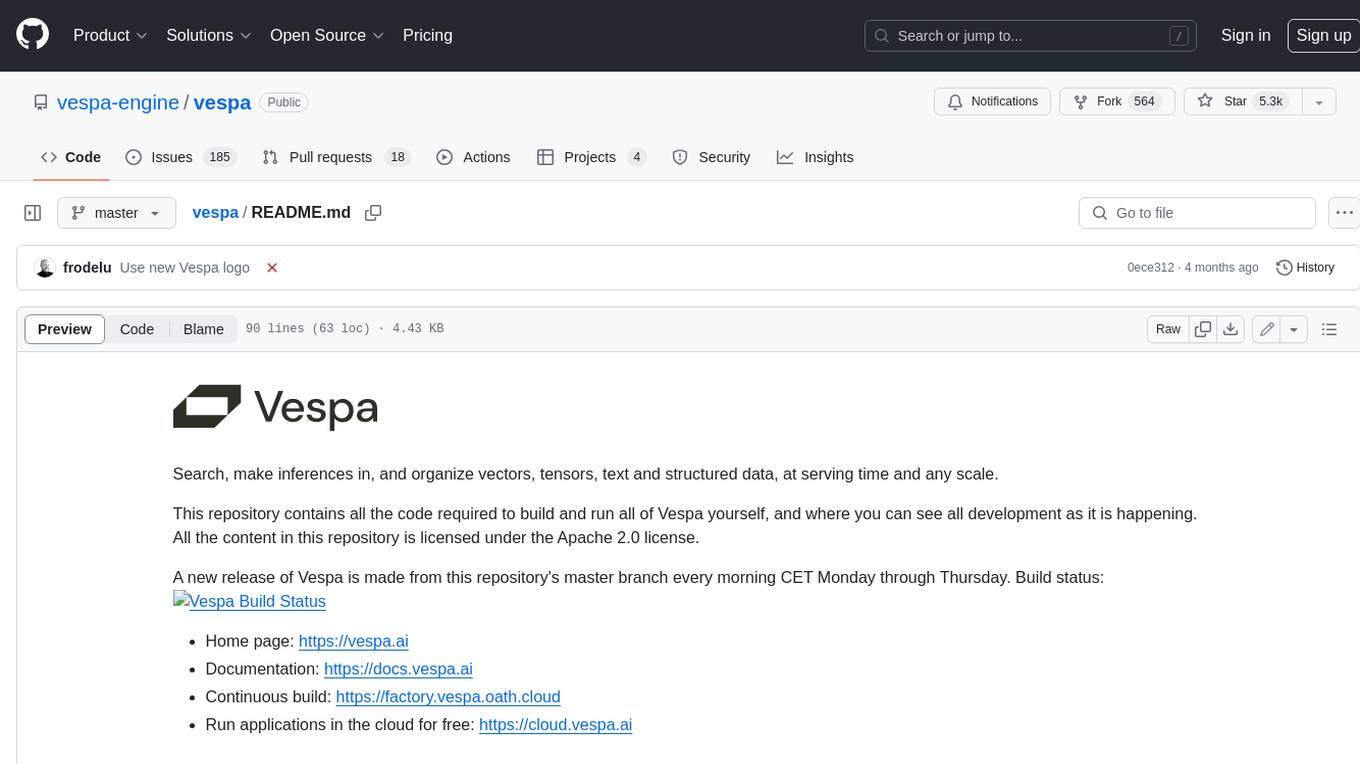
vespa
Vespa is a platform that performs operations such as selecting a subset of data in a large corpus, evaluating machine-learned models over the selected data, organizing and aggregating it, and returning it, typically in less than 100 milliseconds, all while the data corpus is continuously changing. It has been in development for many years and is used on a number of large internet services and apps which serve hundreds of thousands of queries from Vespa per second.
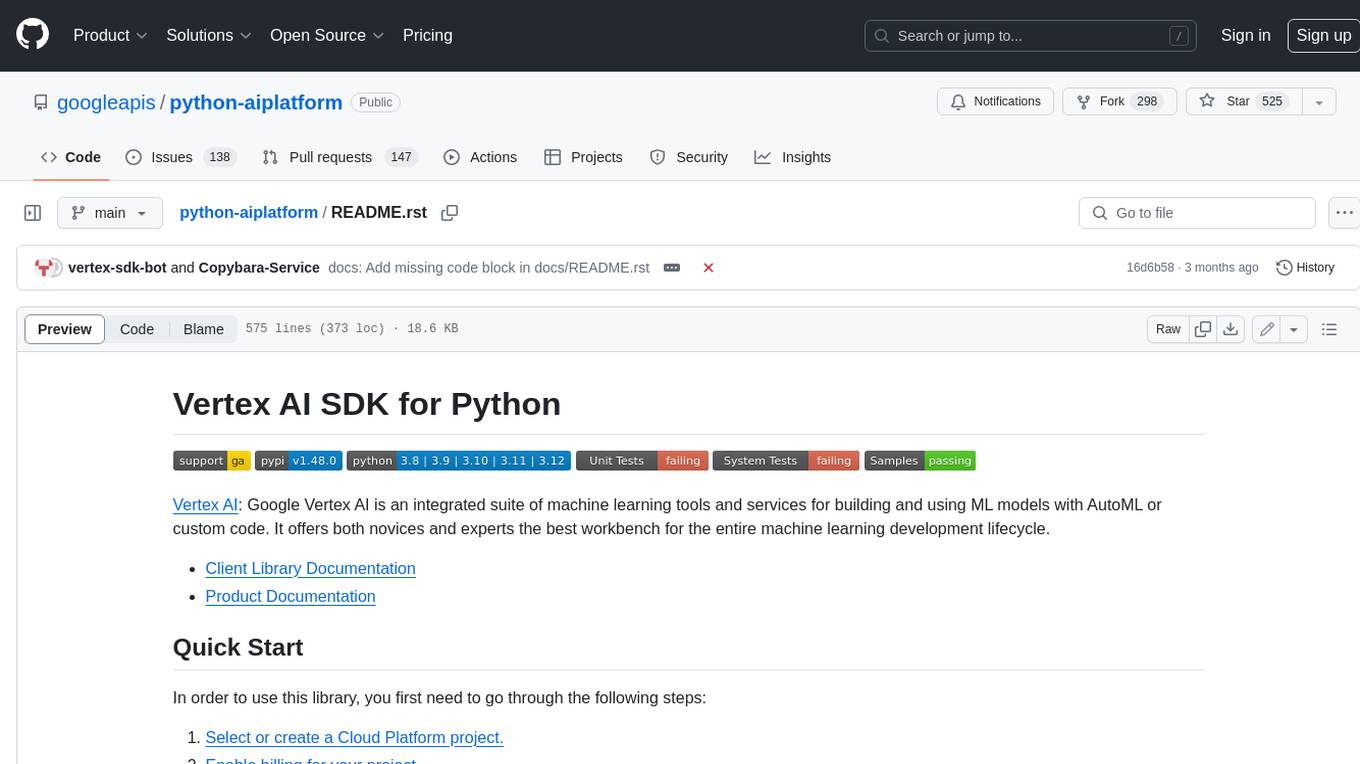
python-aiplatform
The Vertex AI SDK for Python is a library that provides a convenient way to use the Vertex AI API. It offers a high-level interface for creating and managing Vertex AI resources, such as datasets, models, and endpoints. The SDK also provides support for training and deploying custom models, as well as using AutoML models. With the Vertex AI SDK for Python, you can quickly and easily build and deploy machine learning models on Vertex AI.
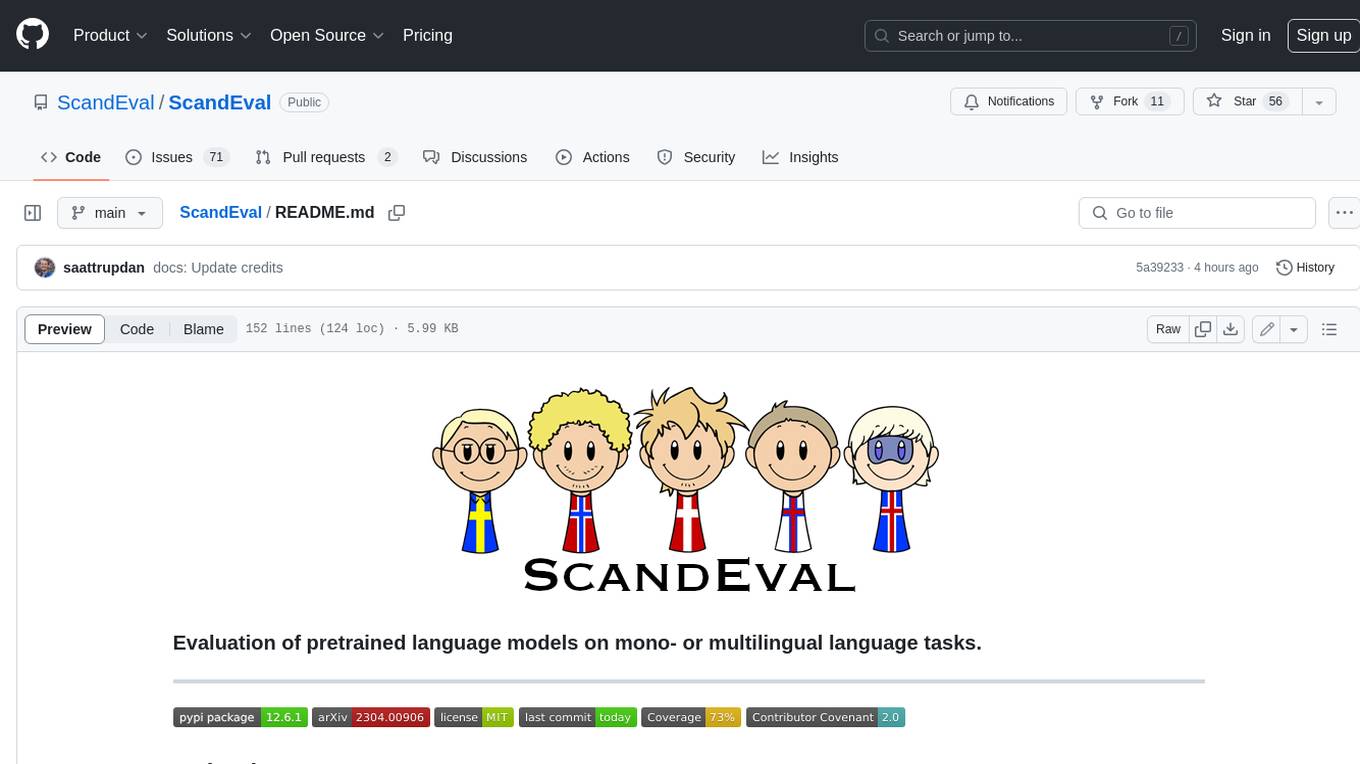
ScandEval
ScandEval is a framework for evaluating pretrained language models on mono- or multilingual language tasks. It provides a unified interface for benchmarking models on a variety of tasks, including sentiment analysis, question answering, and machine translation. ScandEval is designed to be easy to use and extensible, making it a valuable tool for researchers and practitioners alike.
For similar jobs

weave
Weave is a toolkit for developing Generative AI applications, built by Weights & Biases. With Weave, you can log and debug language model inputs, outputs, and traces; build rigorous, apples-to-apples evaluations for language model use cases; and organize all the information generated across the LLM workflow, from experimentation to evaluations to production. Weave aims to bring rigor, best-practices, and composability to the inherently experimental process of developing Generative AI software, without introducing cognitive overhead.

LLMStack
LLMStack is a no-code platform for building generative AI agents, workflows, and chatbots. It allows users to connect their own data, internal tools, and GPT-powered models without any coding experience. LLMStack can be deployed to the cloud or on-premise and can be accessed via HTTP API or triggered from Slack or Discord.

VisionCraft
The VisionCraft API is a free API for using over 100 different AI models. From images to sound.

kaito
Kaito is an operator that automates the AI/ML inference model deployment in a Kubernetes cluster. It manages large model files using container images, avoids tuning deployment parameters to fit GPU hardware by providing preset configurations, auto-provisions GPU nodes based on model requirements, and hosts large model images in the public Microsoft Container Registry (MCR) if the license allows. Using Kaito, the workflow of onboarding large AI inference models in Kubernetes is largely simplified.

PyRIT
PyRIT is an open access automation framework designed to empower security professionals and ML engineers to red team foundation models and their applications. It automates AI Red Teaming tasks to allow operators to focus on more complicated and time-consuming tasks and can also identify security harms such as misuse (e.g., malware generation, jailbreaking), and privacy harms (e.g., identity theft). The goal is to allow researchers to have a baseline of how well their model and entire inference pipeline is doing against different harm categories and to be able to compare that baseline to future iterations of their model. This allows them to have empirical data on how well their model is doing today, and detect any degradation of performance based on future improvements.

tabby
Tabby is a self-hosted AI coding assistant, offering an open-source and on-premises alternative to GitHub Copilot. It boasts several key features: * Self-contained, with no need for a DBMS or cloud service. * OpenAPI interface, easy to integrate with existing infrastructure (e.g Cloud IDE). * Supports consumer-grade GPUs.

spear
SPEAR (Simulator for Photorealistic Embodied AI Research) is a powerful tool for training embodied agents. It features 300 unique virtual indoor environments with 2,566 unique rooms and 17,234 unique objects that can be manipulated individually. Each environment is designed by a professional artist and features detailed geometry, photorealistic materials, and a unique floor plan and object layout. SPEAR is implemented as Unreal Engine assets and provides an OpenAI Gym interface for interacting with the environments via Python.

Magick
Magick is a groundbreaking visual AIDE (Artificial Intelligence Development Environment) for no-code data pipelines and multimodal agents. Magick can connect to other services and comes with nodes and templates well-suited for intelligent agents, chatbots, complex reasoning systems and realistic characters.


